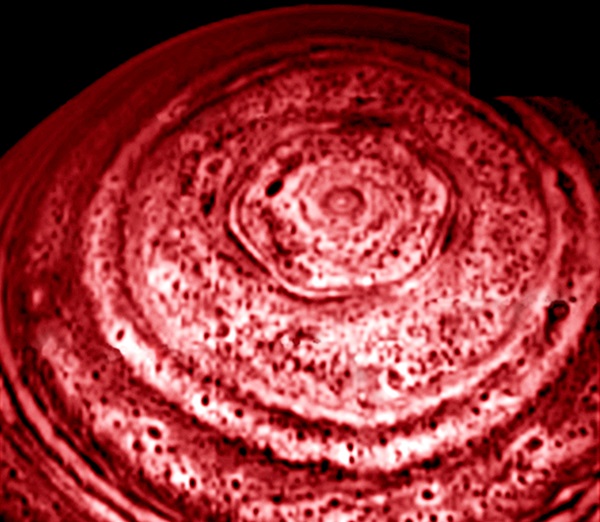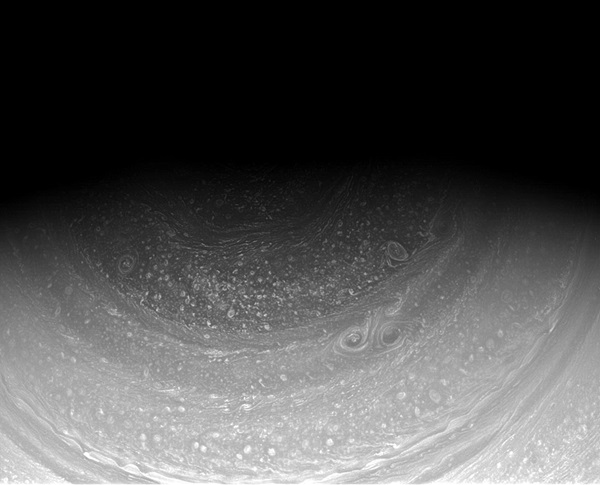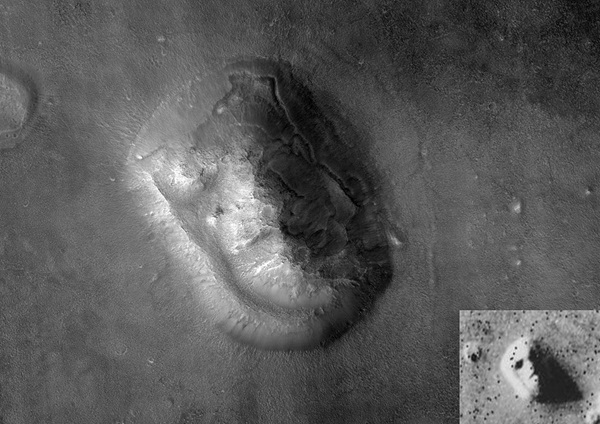Key Takeaways:
Every once in a Blue Moon, astronomers see something that makes their jaws drop to the floor, like in the cartoons. They’ll phone friends and colleagues, and exclaim: “Get over here, Chris. You won’t believe this new Cassini image.”
That’s what happened in 2006. There, sitting precisely atop Saturn’s north pole, was an enormous hexagon. At its exact center was … another hexagon.
At first, incredulous planetary scientists thought the ringed planet’s extremely high-speed winds, screaming at more than 300 mph (500 km/h), had somehow momentarily produced this shape. But when scientists started digging through old Voyager photographs from a quarter century earlier, bingo. The hexagon had been there back then, too. It’s a permanent feature, or at least long lived, akin to Jupiter’s Great Red Spot.
NASA’s December 9, 2009, press release was a study in bewilderment. A Cassini mission researcher called it “one of the most bizarre things we’ve ever seen.” The visual and infrared mapping by NASA’s Jet Propulsion Laboratory spectrometer team member Kevin Baines had previously said: “We’ve never seen anything like this on any other planet. Indeed, Saturn’s thick atmosphere, where circularly shaped waves and convective cells dominate, is perhaps the last place you’d expect to see such a six-sided geometric figure, yet there it is.”
Subsequent infrared views revealed that the entire structure, at latitude 77°, ignores the tornado-level winds blowing all around it and persists as if it were made of granite. The hexagon rotates every 10 hours and 39 minutes, the same spin period as Saturn’s magnetic field, and is assumed to match the interior rotation of the ringed world.
Saturn’s other pole has similarly persistent high-speed winds, and even sometimes a hurricane-like storm with eye-wall clouds, but no geometric pattern.
The sides of the northern hemisphere’s hexagon are each 8,600 miles (13,800 km) long, about the width of Earth. The entire structure, some 15,000 miles (24,000 km) across, remains locked in place and does not shift in longitude, unlike all other clouds in Saturn’s atmosphere. Nearly four Earths could fit inside it. Newer images taken by the orbiting Cassini in thermal-infrared light show that the hexagon extends much deeper into the atmosphere than previously expected, and penetrates at least 60 miles (100 km) below the cloud tops.
The hexagon’s cause is naturally a topic of immense speculation. It is assumed to be a standing wave, like the quasi-permanent lenticular clouds seen hovering over some earthly mountains even though high-speed winds blow through them. The problem, of course, is explaining why a standing wave should assume this shape — or any geometric pattern for that matter.
Another thought is that it may result from a unique, previously unseen kind of aurora, meaning the hexagon was somehow sculpted by the planet’s magnetic field and by electrical forces. After all, Saturn’s actual aurora flickers high above that same location. Yet another idea is that, since the hexagon rotates in perfect sync with Saturn’s radio emissions, perhaps that part of the energy spectrum is visually manifesting itself. However, it is easy to say such things but quite another to come up with some actual credible physical mechanism for how they work.
Not surprisingly, the UFO crowd has its own explanation. After the touched-up spacecraft photo of that mesa in the martian Cydonia region, the “Face on Mars,” was debunked due to better orbital resolution, Saturn’s hexagon is a superb replacement, akin to manna from heaven. The belief of “UFO-ologists” is that an alien civilization (or perhaps even God) put this hexagon where humans couldn’t see it until the age of space exploration. Analogous to the Monolith planted near the lunar crater Tycho in Arthur C. Clark’s 2001: A Space Odyssey, this hexagon lies permanently out of sight of even Earth’s best telescopes since it’s at the “edge” of Saturn at its north pole. Only when we sent a spacecraft to peer down from above was it finally visible.
And the hexagon’s purpose? Here’s where the story gets muddled. What should a hexagon mean to us? A witchcraft symbol? Is it a stop sign, telling us to stop making war? No, wait, that would be an eight-sided figure.
In spring 2010, help arrived when Oxford University researchers in the field of fluid dynamics used a water tank mounted on a turntable. As it rotated, a solid ring in the base spun at a different rate, producing turbulent shear flows. The result of this fluid instability was the creation of a steady six-sided pattern in the glycol-water mixture, which emulated the hexagon in question.
This does not prove that Saturn works the same way. The scale is vastly different. After all, we see tiny natural hexagons in crystals and snowflakes, but we would never observe a mile-wide hexagonal cloud in the sky, lingering for years. Still, the fact that fluid dynamics can come up with a naturally enduring polygon provides a good “standing wave” starting point as planetary scientists continue to probe this bizarre mystery of Saturn’s atmosphere.












